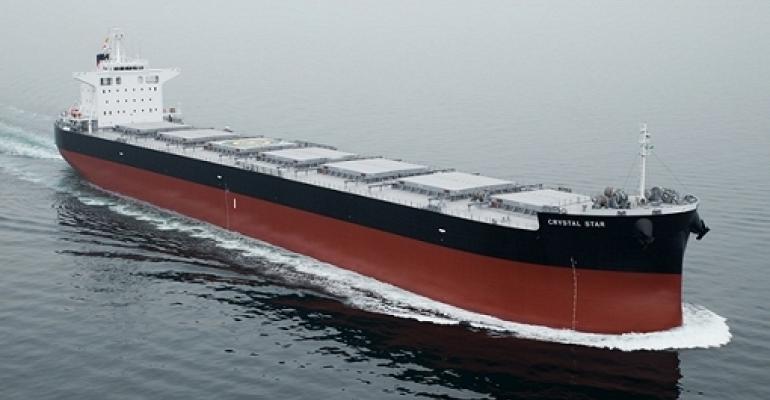However, the panamax market had been going strong throughout the week and became the main growth driver for the Baltic Dry Index (BDI) to finish at 1,197 points on Thursday, up by 6 points at day-on-day basis.
The growth was attributed to the growing seaborne soybean trades where Brazilian soybean exports increased at a significance rate, and overall around 161m mt of soybean shipments are expected in 2018.
“It was another active trading day on Panamax paper with early support quickly spilling over into some better buying post index at Thursday,” said a FIS Freight Forward Agreement (FFA) broker.
On Thursday, he noted that the prompts remained the focus with Mar and April trading up to $13,400 and $14,400 highs respectively, while Q2 saw resistance at $14,100 tested.
Then, the panamax time charter average recorded at $12,763 on Thursday, up $300 day-on-day and booked a gain of $708 from $12,055 posted on Monday.
The capesize paper market, however came under pressure since the beginning of the week with weaker sentiment and fixtures on both basins. The prompt period began to trade down again, albeit it on low volume and the physical index showed a lack of drives and further eroded as the week drawn to a close.
“The prompt periods came under pressure once again but news of C5 fixing 6.40 and talk of tonnage being taken at significant rate in the north Atlantic brought a wave of buying interest back into the paper.” noted a FFA shipbroker on the Thursday.
Despite the new wave of buying interest, the capesize 5 time charter average remained on downtrend and recorded $11,669 on Thursday, down $128 day-on-day and booked a loss of $982 from $12,651 posted on Monday.
Similarly, the supramax paper market came under pressure at the start of the week but began to strengthen as the week ended.
“Supramax paper witnessed a slightly more positive day on the prompt with March being paid $11,800 and the Q2 reaching $12,600.” commented a supramax broker on the Thursday market. During the morning trading session on Thursday, the cupramax index surprised the market once again with 10TC trading at $65 and 6TC $117. However at the afternoon session, the market was relatively quiet and muted with limited activity. Thus, the Supramax time charter average recorded at $11,476 on Thursday, up $117 day-on-day and saw a rise of $318 over Monday’s rate of $11,158.
The handysize market then remained quiet throughout the week with time charter average recorded at $8,936 on Thursday, up $123 at day-on-day basis.
Copyright © 2024. All rights reserved. Seatrade, a trading name of Informa Markets (UK) Limited. Add Seatrade Maritime News to your Google News feed.


